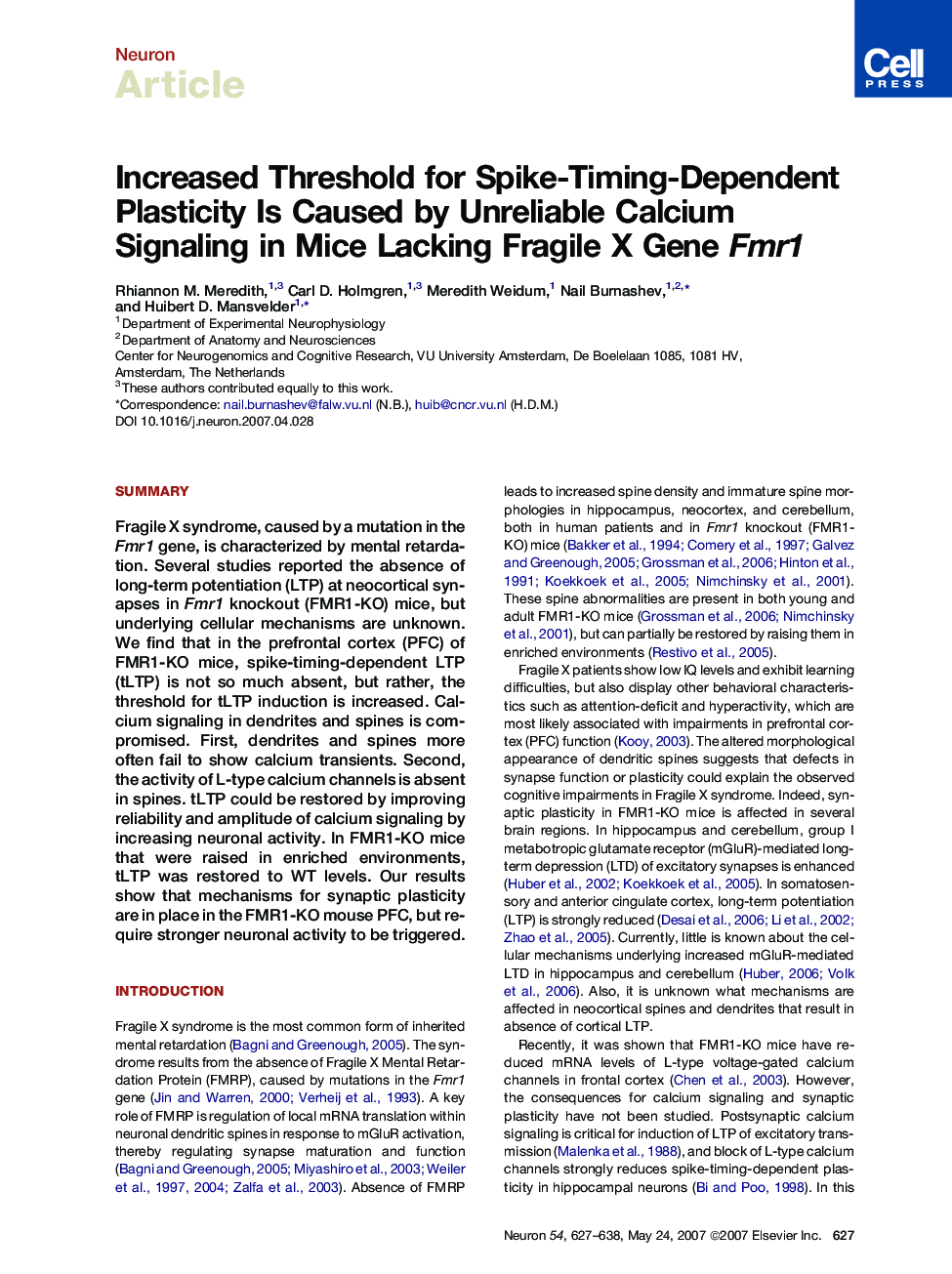| Article ID | Journal | Published Year | Pages | File Type |
|---|---|---|---|---|
| 4322580 | Neuron | 2007 | 12 Pages |
SummaryFragile X syndrome, caused by a mutation in the Fmr1 gene, is characterized by mental retardation. Several studies reported the absence of long-term potentiation (LTP) at neocortical synapses in Fmr1 knockout (FMR1-KO) mice, but underlying cellular mechanisms are unknown. We find that in the prefrontal cortex (PFC) of FMR1-KO mice, spike-timing-dependent LTP (tLTP) is not so much absent, but rather, the threshold for tLTP induction is increased. Calcium signaling in dendrites and spines is compromised. First, dendrites and spines more often fail to show calcium transients. Second, the activity of L-type calcium channels is absent in spines. tLTP could be restored by improving reliability and amplitude of calcium signaling by increasing neuronal activity. In FMR1-KO mice that were raised in enriched environments, tLTP was restored to WT levels. Our results show that mechanisms for synaptic plasticity are in place in the FMR1-KO mouse PFC, but require stronger neuronal activity to be triggered.
